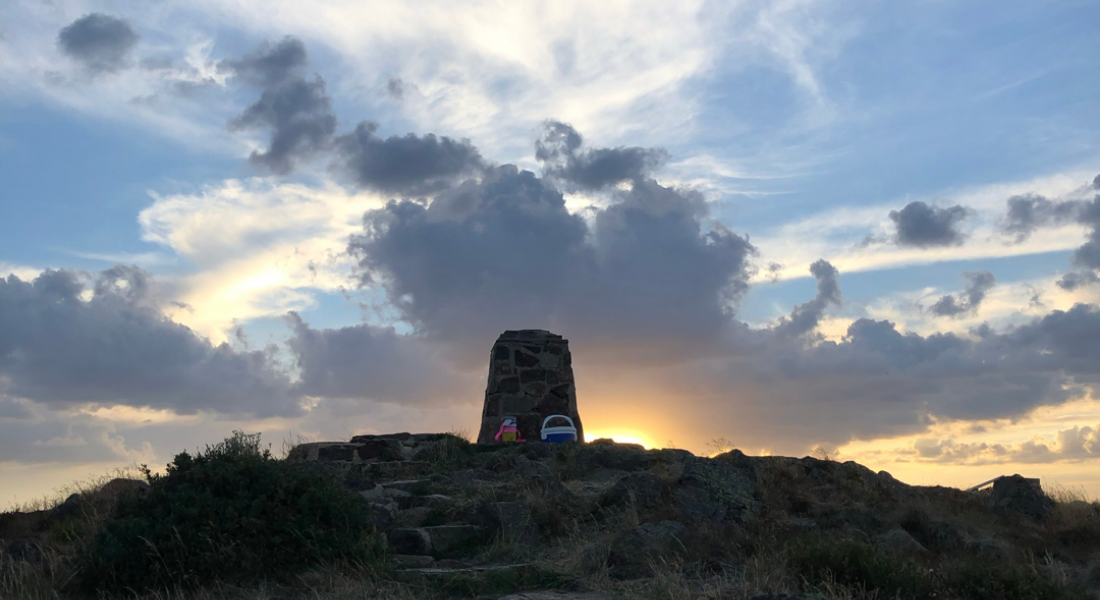The Four Pillars of Endurance
[These pillars were written for BKT-Trail in readiness for Amanda’s quest to run Oscars Hut2Hut, Mt Buller, February 2022)
Not all endurance races are the same; the distance, terrain, and vert to name just a few of the differences. Trail running can be quite complex to say the least; especially logistically when it comes to races that don’t offer a huge amount of oncourse support.
You can never underestimate the trails; sure, nature has your back, but she can also be unpredictable and when this happens, you need to be prepared. Being prepared both in training and racing can save you from a DNS (did not start), a DNF (did not finish) and a WTF…well I think you know this one.
Below are our Four Pillars to help prepare you for an endurance race (including training)
Emergency Supplies
What do you never leave home without on a trail run? A first aid kit. You certainly don’t need to carry much but a few essential items could just save your life.
No matter how long or short a run is I will always carry a basic first aid kit including a snake bandage. Trails are isolated and help may not be as close as you need so think safety first.
Contents of a basic first aid kit:
- 2 x fitted face masks
- Triangular bandage
- Band aids/blister wraps
- 10cm elastic bandage for snake bites/sprains
Gear
You never go out for a trail run and think something serious is going to happen, no one wants to think that way. But 100km through the Alpine region can be anything but predictable, just like life these days so one of the greatest lessons you can learn when starting out trail running is always being prepared – for anything.
Below is a list of the mandatory gear required for the Hut2Hut Alpine Endurance event. You are carrying this to not only keep you safe but other competitors too as you never know if you are going to find yourself up shit creek.
- Waterproof and windproof jacket with hood and sealed seams
- Waterproof and windproof pants with sealed seams
- Long sleeved thermal top and long johns (polypropylene, wool or similar)
- Windproof gloves
- Map of the trails
- Course notes (preferably laminated or in a waterproof map case or zip lock bag)
- Fail Safe Base Plate Compass
- Lighter or waterproof matches
- Whistle (pea-less)
- Bivvy Sack
- 1x portable mini power bank
- Torch/headlamp PLUS spare batteries
- Food—for the run and emergency food if lost
- Water carrying capacity —minimum 2-litres.
- Waterproof bag to keep your compulsory clothing dry
- Sunscreen
Nutrition
Nutrition training is equally as important as the physical training. Over the past few months, I have been testing my guts with various nutrition options to help ensure I am well energised during an ultra-endurance race. So, the question is, can an ultra-endurance planted runner fuel an entire race on gels alone? Indeed, especially if they are Spring Energy gels.
The real food nature of these gels makes them palatable and easy to digest; with a savoury and slightly sweet undertone when pushing the body, it’s refreshing to consume a natural product that provides adequate energy and flavour.
Even when racing, the taste, nutritional value, and ingredients are still important. Choose your fuel wisely (and remember to train with the fuel you are going to consume during a run no matter how big or small).
Race Preparation
Training for an ultra-endurance race strips you bare at times; both physically and mentally. The hours spent training gives you plenty of time to understand how you will fare during an ultra-endurance race; do you prefer to train/race solo or are you more of a social being needing external energy to help push you through?
I carry out majority of my training solo, after all during a race the only person I am racing against is myself so best train that way. Training solo allows me to tap into my inner self, my spiritual self and it’s this higher awareness that allows me to train smart.
I used to run to race now I run to both race and to connect further with my soul. As well as the spiritual connection running brings, I never underestimate the strategic long-term planning that goes into preparing for a race too; you can’t have one without the other.
What I have learnt over the years of training for ultras:
- Ensure you have a solid foundation/base to avoid injuries and DNF’s
- Be consistent with training to build your base before launching into weekly long runs
- Train on terrain like what you plan to race on
- Challenge your weakness and work to your strengths
- Don’t neglect downhill running (your quads will thank you for this later)
- To improve your running economy, include at least one speed session in your weekly training
- Train strong; include strength & conditioning sessions to build a strong, resilient, and balanced body (even sacrifice a run session for a S&C session)
- What feels good at the start of a race might not do so at the end, constantly train with the gear (including shoes) that you are going to race in (after all that’s what training is for)
- Don’t overlook fuelling; hydration and energy intake is never to be overlooked
- Always run your race not someone else
- Be responsible for you; don’t rely on aid stations for your fuelling requirements
- Remember you have a choice with regards to how much you suffer
- Appreciate the power of breath and the power of now
Despite the physical strain of running, not all runners have sore knees and blisters with correct training and gear, you can easily avoid both.
Fun on the trials
Trails runs are fun however If you are under trained, under fuelled and under prepared then very quickly they can turn from fun to frustration.
Planted Runner | Coach
Need guidance for your next ultra-endurance trail run? Contact me here.











Leave a Reply